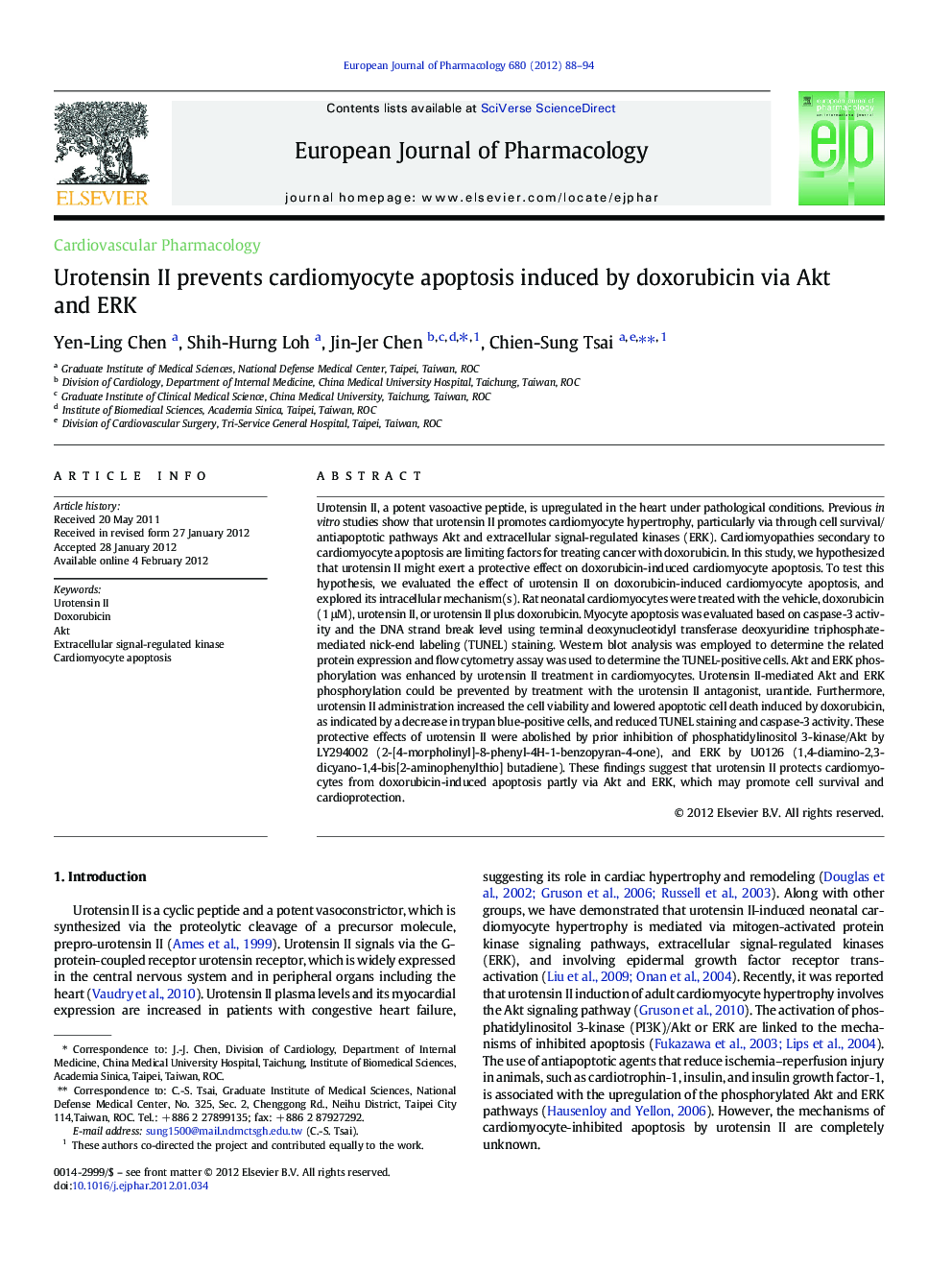| Article ID | Journal | Published Year | Pages | File Type |
|---|---|---|---|---|
| 5829740 | European Journal of Pharmacology | 2012 | 7 Pages |
Abstract
Urotensin II, a potent vasoactive peptide, is upregulated in the heart under pathological conditions. Previous in vitro studies show that urotensin II promotes cardiomyocyte hypertrophy, particularly via through cell survival/antiapoptotic pathways Akt and extracellular signal-regulated kinases (ERK). Cardiomyopathies secondary to cardiomyocyte apoptosis are limiting factors for treating cancer with doxorubicin. In this study, we hypothesized that urotensin II might exert a protective effect on doxorubicin-induced cardiomyocyte apoptosis. To test this hypothesis, we evaluated the effect of urotensin II on doxorubicin-induced cardiomyocyte apoptosis, and explored its intracellular mechanism(s). Rat neonatal cardiomyocytes were treated with the vehicle, doxorubicin (1 μM), urotensin II, or urotensin II plus doxorubicin. Myocyte apoptosis was evaluated based on caspase-3 activity and the DNA strand break level using terminal deoxynucleotidyl transferase deoxyuridine triphosphate-mediated nick-end labeling (TUNEL) staining. Western blot analysis was employed to determine the related protein expression and flow cytometry assay was used to determine the TUNEL-positive cells. Akt and ERK phosphorylation was enhanced by urotensin II treatment in cardiomyocytes. Urotensin II-mediated Akt and ERK phosphorylation could be prevented by treatment with the urotensin II antagonist, urantide. Furthermore, urotensin II administration increased the cell viability and lowered apoptotic cell death induced by doxorubicin, as indicated by a decrease in trypan blue-positive cells, and reduced TUNEL staining and caspase-3 activity. These protective effects of urotensin II were abolished by prior inhibition of phosphatidylinositol 3-kinase/Akt by LY294002 (2-[4-morpholinyl]-8-phenyl-4H-1-benzopyran-4-one), and ERK by U0126 (1,4-diamino-2,3-dicyano-1,4-bis[2-aminophenylthio] butadiene). These findings suggest that urotensin II protects cardiomyocytes from doxorubicin-induced apoptosis partly via Akt and ERK, which may promote cell survival and cardioprotection.
Related Topics
Life Sciences
Neuroscience
Cellular and Molecular Neuroscience
Authors
Yen-Ling Chen, Shih-Hurng Loh, Jin-Jer Chen, Chien-Sung Tsai,
